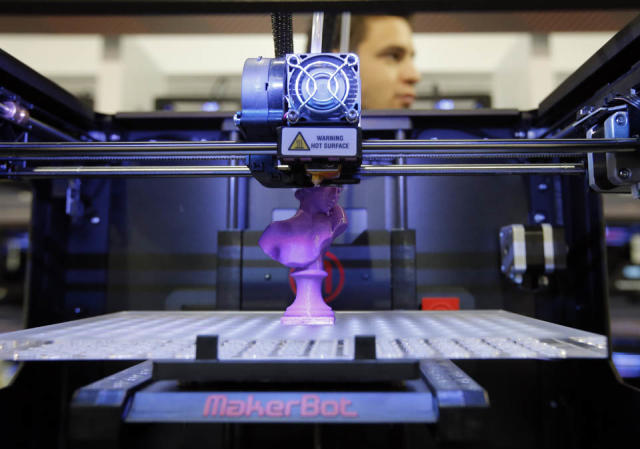3D printing has come a long way over the past few years. Now that many different 3D printing technologies have been widely adopted by manufacturers, supply chain and logistics companies, and even consumers, we’re seeing growing adoption of these new manufacturing tools across all industries. This year is no exception. In fact, it looks like this is going to be the year when 3D printing really takes off. Here are 3D Printing Trends To Watch For in 2023.

New Materials for 3D Printing
In the early days of 3D printing, the majority of materials were made from plastics. But over the years, we’ve seen many new materials emerge that can be used for printing. One of these new materials is food. With the rise of the restaurant sector, restaurants and food businesses have become some of the first adopters of 3D printing. Now, the food manufacturing industry is starting to take note. With the latest advances in additive manufacturing, more and more food manufacturers are exploring the benefits of using food-grade plastics. If you’re looking to start using 3D printing materials, you’ll want to keep an eye out for new materials that are becoming more common.
Remote Manufacturing With Robots and 3D Printing
When it comes to remote manufacturing, there have been many advances over the past few years. But in 2023, these technologies are going to take off thanks to the increased use of robots and 3D printing. With the rise of remote manufacturing, companies have increasingly looked to automate production and generate their own supply chains. Robotics are a key part of many companies’ push towards remote manufacturing.
And the use of robots has not been limited to the manufacturing sector. The agricultural, construction, and healthcare industries are also seeing the benefits of robotics in the service of remote manufacturing. In order to take advantage of these new technologies, you’ll want to keep an eye out for technologies that allow manufacturers to connect with robots. You’ll also want to keep an eye out for technologies that allow manufacturers to connect with 3D printing.
Industry 4.0 With Wearable Tech and Internet of Things
Since the launch of Industry 4.0, more and more companies have started to take advantage of these technologies. And in 2023, we expect to see an even greater push to adopt these technologies. With the rise of wearable tech and IoT capabilities, manufacturers are now able to monitor and manage their operations with greater efficiency. One of the biggest benefits of wearable tech and IoT is that it allows companies to automate operations. By leveraging sensors and the ability to connect sensors to multiple systems, manufacturers are now able to create fully automated production systems.
By leveraging wearable tech and IoT, companies are also able to gather data and make more informed business decisions. This includes being more informed about consumer trends and being able to respond to these trends more effectively. If you’re interested in taking advantage of these new technologies, you’ll want to keep an eye out for technologies that allow manufacturers to connect with wearable tech. And you’ll also want to keep an eye out for technologies that allow manufacturers to connect with IoT.

Digital Fabrication And Automated Manufacturing
Over the last few years, 3D printing has seen a huge rise in popularity. But it’s not just 3D printing that’s making this transition. Digital fabrication is also making a significant impact on the manufacturing sector. Digital fabrication is a set of technologies that are used to create models and create designs. These technologies then help manufacturers create these designs on-demand, allowing for greater speed and efficiency in the manufacturing process.
The impact of these new technologies is evident when you look at the construction sector. As construction is commonly seen as a manual process, these technologies are helping to automate it. This allows for greater efficiency and speed to help meet demand and create more resilient infrastructure. If you’re looking to take advantage of these new technologies, you’ll want to keep an eye out for technologies that allow manufacturers to create models. And you’ll also want to keep an eye out for technologies that allow manufacturers to create designs.
Augmented Reality and Robotics in Manufacturing
Robotics are another technology that’s gaining traction in manufacturing for a number of use cases. The use of 3D printing to create functional parts for autonomous manufacturing and robotics can be traced back to World War II. After WWII, the aerospace industry saw a massive boom in the use of robotics, but it was only recently that new technologies like Augmented Reality and 3D printing were implemented.
Augmented Reality has seen a massive boom in the medical device and gaming industries, but it’s also becoming a key technology in manufacturing. AR can be used to create virtual instructions, virtual gauges, and virtual models to help manufacturers scale up production and improve employee safety. AR can also be used to connect machines and create a digital workforce, allowing employees to see where they need to be. Robotic technology is also becoming more advanced and widespread in manufacturing. Robotic arms are being used to create parts that have a higher degree of precision and accuracy, such as medical devices and 3D printed parts.
5D Printing And Additive Manufacturing
The next big innovation in 3D printing will be the creation of material properties using nanotechnology, atomic layer deposition, and other next-generation technologies. These technologies are being developed to create materials with different properties than what’s currently possible. The first material that could be used to create custom objects is plastic. Current methods to create custom 3D printing materials produce materials that have a limited number of properties.
A NEXT-GEN material that could be used to create custom objects would have properties such as conductivity, shape memory, and conductive fluids. Atomic layer deposition could be used to produce anisotropic properties, allowing custom objects to have different colorations. The introduction of this material could fundamentally change the way manufacturers are able to create custom parts. Many parts today are produced using a similar design and scaled up, which makes it difficult to produce custom parts.
Cloud-Based Manufacturing
Cloud-based manufacturing technologies are another innovation that could help to transform manufacturing. One of the most common features of cloud-based manufacturing systems is a supply chain management system that helps manufacturers to manage all aspects of their production. Cloud-based manufacturing technologies like 3D printing, collaborative manufacturing, and automated materials management can also integrate with other cloud-based technologies, such as ERP or CRM systems.
Cloud-based manufacturing systems can also help to track the supply chain and provide visibility into the various stages of production. This could help manufacturers to identify bottlenecks and have an overall better management of their supply chain. Cloud-based manufacturing systems can also be used to track quality issues and defects in production. This could help manufacturers to spot issues early and resolve them quickly.
Bottom line
And while many of these trends have been in the works for quite some time, they are finally becoming more widely adopted. This is likely to result in a surge in innovation across many industries. From the use of new materials to the jump in remote manufacturing, we’re likely to see some exciting new trends emerge in 2023.


